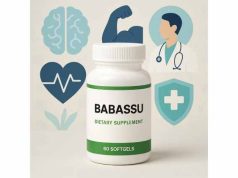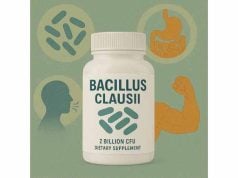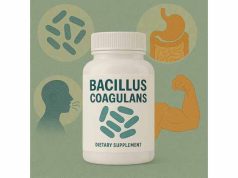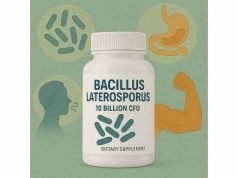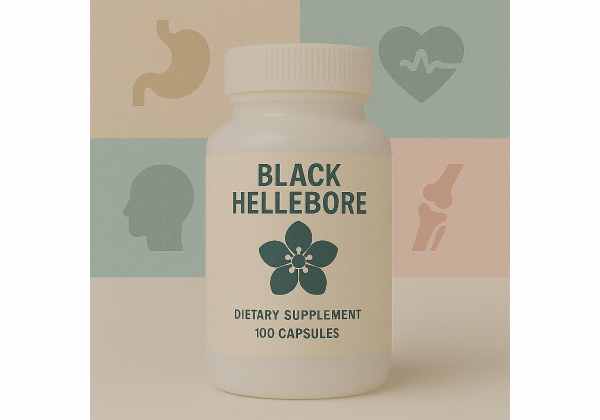
Black hellebore (Helleborus niger), sometimes called Christmas rose, is an ancient herb long used in European herbal traditions. This striking perennial is famous for its dark, leathery leaves and delicate winter flowers—but it’s the potent roots and rhizomes that have attracted herbalists, physicians, and seekers of natural remedies for centuries. Historically, black hellebore was valued for its powerful effects on the nervous system, as a treatment for certain mental conditions, and as a purgative. However, modern science has revealed that it contains several highly toxic compounds, making it one of the most dangerous medicinal plants. This article explores black hellebore’s fascinating history, its supposed benefits, how it was used, crucial safety warnings, and why modern use is extremely rare and highly discouraged except under expert supervision.
Key Takeaways
- Highly toxic plant: Black hellebore contains compounds that can be fatal even in small doses—never self-administer without strict medical supervision.
- Historical use only: Once used as a drastic purgative and in mental health, but modern herbalists avoid it due to severe side effects.
- Potential benefits: Traditionally believed to aid with pain, inflammation, and nervous disorders, but modern research does not support safe usage.
- Extreme caution required: Side effects include vomiting, diarrhea, heart arrhythmias, seizures, and even death.
- Not recommended as a supplement: Safer alternatives exist for every historical use of black hellebore.
Table of Contents
- Black Hellebore Botanical History and Traditional Medicinal Uses
- Active Toxic Compounds and Biological Effects of Black Hellebore
- Supposed Health Benefits and Legacy Uses of Black Hellebore
- Safety, Dangers, Side Effects, and Interactions of Black Hellebore
- Dosage Guidance: Why Self-Medication Is Dangerous
- Black Hellebore Frequently Asked Questions
Black Hellebore Botanical History and Traditional Medicinal Uses
Black hellebore, native to mountainous regions of central and southern Europe, is both an iconic garden perennial and one of the most notorious plants in ancient medicine. It’s not a true rose—despite the nickname “Christmas rose”—but is part of the Ranunculaceae family, related to buttercups and other hellebores.
Botanical Description
- Plant appearance: Glossy, dark green leaves with prominent veining, large white to pinkish flowers blooming in mid-winter, and thick, knobby black roots.
- Growing habits: Prefers shaded woodlands or garden settings; all parts of the plant are toxic, but the roots are especially dangerous.
Ancient and Medieval Uses
- Greco-Roman medicine: Black hellebore was famed for treating “melancholy” (what might now be called depression or severe mood disorders), epilepsy, and as a “purgative”—to expel “evil humors” through vomiting and diarrhea.
- Middle Ages: Continued use in cases of mental illness, severe constipation, or even as a poison. Famous historical figures such as Hippocrates and Galen wrote about its effects, both curative and lethal.
- Folk medicine: In rare instances, it was applied externally for ulcers or used as a last-resort for unresponsive illnesses.
Modern Perspective
Today, black hellebore’s extreme toxicity overshadows any potential benefit. Most herbalists, physicians, and pharmacists strongly discourage its use except in specialized, controlled settings (such as certain homeopathic dilutions or rare pharmaceutical research).
Cultural and Magical Associations
- Black hellebore has a reputation in folklore for warding off evil spirits, purifying homes, and protecting against curses—adding to its mystique but not its safety.
Summary Table: Black Hellebore Overview
| Feature | Details |
|---|---|
| Scientific name | Helleborus niger |
| Family | Ranunculaceae |
| Plant part used | Root and rhizome (historically) |
| Main historical uses | Mental illness, purgative, external ulcers |
| Modern use | Rare; mostly avoided due to toxicity |
Black hellebore’s journey from respected medicine to forbidden herb is a cautionary tale in herbalism—a reminder that “natural” does not always mean “safe.”
Active Toxic Compounds and Biological Effects of Black Hellebore
The risks and historic effects of black hellebore are rooted in its potent mixture of natural chemicals, many of which disrupt nerve and muscle function in the human body. Understanding these compounds clarifies why the plant’s dangers far outweigh its potential benefits.
Key Toxic Constituents
- Helleborin: The most powerful cardiac glycoside in black hellebore, acting on the heart in a manner similar to digitalis but far less predictably.
- Helleborein, helleboreinidine, helleboramine: Additional glycosides and alkaloids with strong effects on both the nervous and cardiovascular systems.
- Saponins: Bitter, irritating chemicals that promote vomiting, diarrhea, and abdominal pain.
- Ranunculin and protoanemonin: Volatile compounds responsible for severe mucous membrane irritation and skin blistering.
- Other alkaloids: Affect brain and nerve function, sometimes leading to seizures or paralysis.
How Black Hellebore Affects the Body
- Disrupts heart rhythm: Cardiac glycosides slow and sometimes dangerously alter the heartbeat, causing bradycardia (slow heart rate), arrhythmias, or even cardiac arrest.
- Violent purgation: Saponins and other compounds stimulate the gut lining, resulting in intense vomiting and diarrhea—historically seen as “cleansing” but often leading to dehydration and collapse.
- Nerve and muscle toxicity: Alkaloids may cause confusion, hallucinations, muscle spasms, tremors, and seizures.
- Severe irritation: Topical or oral exposure can blister skin and mucous membranes.
Modern Science and Clinical Evidence
- Black hellebore has been thoroughly studied for its poisons, not for its medicinal benefit. Cases of accidental ingestion—especially by children or pets—often result in medical emergencies.
- There is no safe, effective modern dosage or preparation; even tiny amounts can trigger life-threatening symptoms.
Summary Table: Toxic Effects of Black Hellebore
| Compound | Main Effect |
|---|---|
| Helleborin | Heart rhythm disruption |
| Saponins | Severe vomiting/diarrhea |
| Alkaloids | CNS toxicity, seizures |
| Ranunculin | Skin and mucous irritation |
While some ancient remedies seemed effective, this was usually due to the plant’s ability to purge or sedate by overwhelming the body’s systems—not by correcting underlying conditions.
Supposed Health Benefits and Legacy Uses of Black Hellebore
Despite its serious risks, black hellebore’s role in medical history offers insights into the evolution of herbal therapy and how the search for cures sometimes led down perilous paths.
Historical Claims and Perceived Benefits
- Treatment for mental illness: Ancient and medieval doctors believed black hellebore could “purge” black bile and treat severe depression, mania, or psychosis. Some patients reportedly showed temporary improvement, likely due to sedative or toxic effects.
- Pain and inflammation relief: Used externally or internally for chronic pain, arthritis, and inflammatory conditions—though benefits were overshadowed by harsh side effects.
- “Heroic” purgative: Induced vomiting and diarrhea in cases of poisoning, constipation, or perceived “humoral imbalance.”
- Epilepsy and seizures: Rarely, low doses were given in attempts to control seizures, but outcomes were unpredictable and dangerous.
Modern Assessment
- There is no modern clinical evidence to support black hellebore as a safe or effective remedy for any condition.
- Safer, proven alternatives exist for every historical indication, including herbs for mood support (like St. John’s wort), pain (like willow bark), and purgation (modern laxatives).
Why Black Hellebore Is No Longer Used
- The margin between an “active” dose and a fatal dose is extremely narrow.
- Serious, sometimes deadly side effects led to its abandonment in herbalism and pharmacy.
- In rare cases, extremely dilute homeopathic preparations (potencies so high that no molecules of the original remain) are used—but not as supplements or for self-care.
Legacy and Cultural Impact
- The legend of black hellebore persists in literature, folklore, and witchcraft—but as a cautionary example rather than a remedy.
Safer Herbal Alternatives for Historical Uses
- For mood and nervous system: St. John’s wort, lemon balm, passionflower.
- For pain and inflammation: Willow bark, turmeric, ginger.
- For digestive cleansing: Senna, cascara sagrada.
Summary Table: Safer Alternatives
| Historical Use | Black Hellebore | Modern Safer Alternatives |
|---|---|---|
| Melancholy/depression | Highly toxic, unsafe | St. John’s wort, lemon balm |
| Pain/inflammation | Risk of fatal side effects | Willow bark, turmeric |
| Purgative/cleansing | Dangerous, not recommended | Senna, cascara sagrada |
While black hellebore’s history is fascinating, its dangers far outweigh any potential benefit in today’s world. Learning from its legacy helps us appreciate safer, evidence-based herbal medicine.
Safety, Dangers, Side Effects, and Interactions of Black Hellebore
Black hellebore’s reputation as one of the most hazardous plants in Western herbal medicine is well-earned. While its ancient uses might intrigue herbal historians, modern science underscores the severe risks associated with this plant—so much so that it is rarely, if ever, recommended for use by herbalists or physicians today.
Why Black Hellebore Is Considered Extremely Dangerous
- High toxicity even in small doses: The margin between a dose that causes effects and one that is lethal is razor-thin.
- Unpredictable reactions: The concentration of toxic compounds can vary widely between individual plants, roots, and preparations, making dosing nearly impossible to control.
- Rapid onset of poisoning: Symptoms can appear within minutes to hours after ingestion or even topical exposure, often escalating quickly to life-threatening emergencies.
Documented Side Effects and Symptoms of Poisoning
- Digestive system: Burning mouth and throat, intense nausea, vomiting, abdominal pain, and explosive diarrhea.
- Cardiovascular system: Dangerous arrhythmias (irregular heartbeat), slowed heart rate, fainting, collapse, and cardiac arrest.
- Nervous system: Dizziness, confusion, headache, muscle tremors, seizures, delirium, and loss of consciousness.
- Respiratory distress: Rapid breathing or, in severe cases, respiratory failure.
- Skin and mucous membrane irritation: Redness, blistering, and severe pain with direct contact.
Special Precautions and Contraindications
- Children and pets: Black hellebore is a frequent cause of accidental poisoning in both groups. All parts of the plant should be kept out of reach.
- Pregnancy and breastfeeding: Absolutely contraindicated due to its uterine-stimulating and toxic effects—linked to miscarriage and birth defects.
- People with heart, kidney, or nervous system conditions: Especially vulnerable to hellebore’s cardiac glycosides and alkaloids.
Potential Interactions with Drugs and Other Supplements
- Cardiac medications (digitalis, beta-blockers, calcium channel blockers): The risk of heart rhythm disturbances is drastically increased.
- Other herbal supplements: Especially those affecting the heart or nervous system (such as foxglove, lily of the valley, or even some sedatives).
- Laxatives and diuretics: Can dangerously amplify dehydration and electrolyte loss from hellebore-induced vomiting or diarrhea.
- Antidepressants and psychiatric medications: Potential for unpredictable interactions due to hellebore’s effects on neurotransmitters and mood.
No Safe Way to Use Black Hellebore at Home
- Traditional preparations (teas, powders, tinctures): These can easily become toxic, even when “diluted.”
- Homeopathy: Only ultra-high dilutions—where no active compound remains—are considered safe. Even then, any benefit is strictly theoretical and not supported by scientific evidence.
- Topical use: Still risky due to skin absorption and severe irritation.
What to Do in Case of Suspected Poisoning
If ingestion or significant contact occurs:
- Call emergency services immediately (poison control or 911).
- Do not induce vomiting unless instructed by a medical professional.
- Provide information about the plant, amount used, and time of exposure.
Summary Table: Dangers and Emergency Signs
| Symptom | Emergency Level |
|---|---|
| Severe vomiting/diarrhea | High—risk of dehydration |
| Heart palpitations/fainting | High—call 911 |
| Seizures/confusion | High—immediate help |
| Skin blistering/redness | Moderate—wash and monitor |
Conclusion
In short, black hellebore is a plant that belongs in the garden—not in home remedies or over-the-counter supplements. There are no circumstances where its risks are justified outside strictly controlled medical or scientific research settings.
Dosage Guidance: Why Self-Medication Is Dangerous
Unlike most herbal supplements, black hellebore cannot be safely dosed or administered without extreme risk. Historical records include cases where small errors in measurement led to death or lifelong disability. For this reason, modern herbal and medical authorities strongly advise against using black hellebore as a supplement.
Why Is Black Hellebore’s Dosage So Dangerous?
- Narrow therapeutic window: The amount needed for “effect” is almost indistinguishable from a toxic or fatal dose.
- Variable potency: Growing conditions, age of the root, and preparation methods create wild fluctuations in toxin levels.
- No modern standardization: Unlike some plant medicines, black hellebore has not been subject to safe, regulated extraction or dosing protocols.
What Did Historical Dosages Look Like?
- Roots and rhizomes: Small quantities were dried and powdered, then mixed with wine, vinegar, or honey and consumed in minuscule doses.
- Decoctions and tinctures: Made by simmering roots or soaking in alcohol—both extremely unpredictable in potency.
- External use: Occasionally used in ointments for skin conditions, but still carried risk of blistering and absorption.
Why Modern Practitioners Reject Black Hellebore
- Safety data: All modern clinical guidance points to severe toxicity and potential for fatal poisoning.
- No proven benefit outweighs the risk: Any perceived “effect” (purgation, sedation, pain relief) is achieved at unacceptable cost to overall health.
- Better alternatives: Every historical use of black hellebore now has safe, effective, evidence-based herbal or pharmaceutical alternatives.
Homeopathy Exception
- Ultra-dilute preparations: Some homeopaths may use “Helleborus niger” at potencies above 12C or 30C, where no original plant compound remains. This is believed by practitioners to be safe—but such products are not supplements, and their effects are not supported by scientific evidence.
If You Encounter Black Hellebore Products
- Do not use any supplement, tincture, or tea containing black hellebore unless prescribed and administered by a trained medical professional in a research or hospital setting.
- Do not trust anecdotal claims, online sellers, or non-professional recommendations about “safe” dosages.
- If you see “black hellebore” listed in a multi-herb formula, seek clarification—it may be a mislabeling, or the product could be unsafe.
Best Practice: Avoidance
- The single best way to benefit from the history of black hellebore is by learning from its dangers and choosing safer herbal allies.
Black Hellebore Frequently Asked Questions
Is black hellebore safe to take as a supplement?
No, black hellebore is considered extremely dangerous. It contains compounds that can cause fatal poisoning even in small amounts. It is not recommended as a supplement for any purpose.
What happens if someone ingests black hellebore?
Ingesting black hellebore can cause violent vomiting, diarrhea, confusion, irregular heartbeat, seizures, and may result in coma or death. Immediate medical attention is required if ingestion is suspected.
Are there any safe ways to use black hellebore?
There are no safe over-the-counter uses for black hellebore. Only homeopathic preparations—where the original substance is diluted beyond molecular presence—are considered non-toxic, but these lack proven benefit.
Why was black hellebore used historically despite its dangers?
Historically, black hellebore was used because ancient doctors believed in drastic purging or sedation to “treat” illnesses. The risks were not understood, and outcomes were often severe or fatal.
What are better alternatives for the conditions black hellebore was used for?
For mood support, pain, inflammation, or digestive issues, modern herbal medicine favors safe herbs like St. John’s wort, lemon balm, willow bark, turmeric, and senna.
Can black hellebore be used topically for skin conditions?
Even topical application can cause severe irritation or blistering. Absorption through the skin is possible, so topical use is not recommended.
Is black hellebore used in homeopathy?
Yes, but only in ultra-high dilutions with no measurable active ingredient. These preparations are considered safe, but their effectiveness is not supported by conventional science.
Disclaimer:
This article is for educational purposes only and is not intended as a substitute for medical advice, diagnosis, or treatment. Always consult a qualified healthcare professional before using any supplement or herbal remedy, especially those with known toxicity or risks.
If you found this guide helpful, please share it on Facebook, X (formerly Twitter), or your favorite social channel. Follow us for more evidence-based information and herbal safety insights. Your support helps us keep sharing trusted wellness resources!


